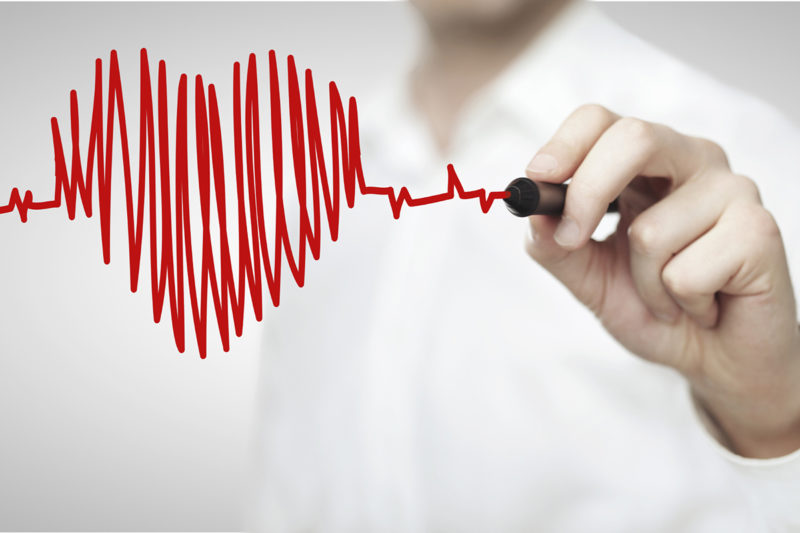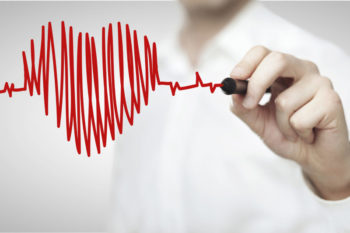
Please be careful with your heart
 Heart disease is the leading cause of death for both men and women globally in the last 15 years. The good news? It is also one of the most preventable. Making heart-healthy choices, knowing your family health history and the risk factors for heart disease, having regular check-ups and working with your physician to manage your health are all integral aspects of saving lives from this often silent killer.
Heart disease is the leading cause of death for both men and women globally in the last 15 years. The good news? It is also one of the most preventable. Making heart-healthy choices, knowing your family health history and the risk factors for heart disease, having regular check-ups and working with your physician to manage your health are all integral aspects of saving lives from this often silent killer.
Since February is the Heart Month because of February 14 Valentine’s day, it has also been designated the Heart Health Month.
So let’s talk about the 14 common myths about heart diseases and by separating fact from fiction let’s see what we can do to make our hearts healthy.
1. “I’m too young to worry about heart disease”
It’s a myth that only old people should worry about heart disease because even young and middle-aged people can develop heart problems – especially now that obesity, type 2 diabetes and other risk factors are becoming more common at a younger age. How you live now affects your risk for cardiovascular diseases later in life. As early as childhood and adolescence, plaque can start accumulating in the arteries and later lead to clogged arteries.
What you can do: Know your family medical history. If you have a history of heart problems, diabetes, hypertension, stroke- ask your doctor to conduct a baseline heart examination that includes checking your cholesterol and blood pressure. Then follow your doctor’s recommendations.
2. “I’d know if I had high blood pressure because there would be warning signs.”
It’s a myth that you only have high blood pressure if you have “nape pain”. High blood pressure is called the “silent killer” because you don’t usually know you have it. Many people are walking around with elevated BP without feeling anything and they are like “walking time bombs”! You may never experience symptoms, so don’t wait for your body to alert you that there’s a problem. The way to know if you have high blood pressure is to HAVE IT CHECKED with a simple blood pressure test. Early treatment of high blood pressure is critical because, if left untreated, it can cause heart attack, stroke, kidney damage and other serious health problems.
What you can do: Have your blood pressure checked. If it’s above 140/90 millimetres of mercury, ask your doctor what you can do to bring it down.
3: “It’s okay to have higher blood pressure when you’re older.”
This is a myth because although blood pressure tends to rise with age, it doesn’t mean that it is good for you. It happens because artery walls become stiff with age. Stiff arteries force the heart to pump harder. This sets up a vicious cycle. Blood pounding against the artery walls damages them over time. The overworked heart muscle becomes less effective and pumps harder to meet the body’s demands for blood. This further damages the arteries and invites fat into the artery walls. This is how high blood pressure increases the risk of heart attack and stroke.
What you can do: Have your blood pressure checked. If it’s above 140/90 millimetres of mercury, ask your doctor what you can do to bring it down.
4. “I’ll know when I’m having a heart attack because I’ll have chest pain.”
It’s a myth that a heart attack always presents with chest pain. Not necessarily. Although it’s common to have chest pain or discomfort, a heart attack may present with shortness of breath, nausea, feeling lightheaded, and pain or discomfort in one or both arms, the jaw, neck or back or even as persistent abdominal pain!
What you can do: It’s good to have a regular check up if you have the risk factors already. Once you have the above symptoms have yourself examined at a clinic or emergency room.Even if you’re not sure it’s a heart attack, call 9-1-1 immediately.
5. “Diabetes won’t cause heart disease if you take diabetes medication.”
It’s a myth that if one’s diabetes is under control, one cannot have heart disease anymore. Diabetes medication helps lower blood sugar levels. Maintaining normal blood sugar levels is important for preventing complications that affect the smaller blood vessels (micro vascular complications), such as kidney disease, loss of vision, erectile dysfunction, and nerve damage.
But blood sugar control has less effect on the large blood vessels that become inflamed and diseased, increasing the risk of heart attack and stroke. “These vessels benefit more from lowering cholesterol and blood pressure,” says Dr. Alan Malabanan, a diabetes specialist at Harvard-affiliated Brigham and Women’s Hospital.
What you can do: Take your diabetes medication to prevent micro vascular complications. Also do everything you can to lower high cholesterol and high blood pressure, stop smoking and drop extra weight. These measures will reduce your risk of heart disease and stroke.
6. “Heart disease runs in my family, so there’s nothing I can do to prevent it.”
It’s a myth that there’s nothing you can do to help prevent heart disease once you have it in your family. Although people with a family history of heart disease are at higher risk, there are steps that can be taken to dramatically reduce ones risk.
What you can do: Get active; control cholesterol; eat better; manage blood pressure; maintain a healthy weight; control blood sugar; and stop smoking.
7. “I don’t need to have my cholesterol checked until I’m middle-aged.”
This is a myth because The American Heart Association recommends you start getting your cholesterol checked every 5 years starting at age 20. It is recommended to have your cholesterol test even earlier if your family has a history of heart disease. Children in these families can have high cholesterol levels, putting them at increased risk for developing heart disease as adults.
What you can do: Eat a healthy diet and exercise regularly and to have your cholesterol test even earlier if your family has a history of heart disease.
8. “If you take a cholesterol-lowering drug, you can eat anything.”
This is a myth because cholesterol in the bloodstream comes from two sources—your liver makes some, and you get some from certain foods. Statins reduce the amount of cholesterol made by the liver. This causes blood levels of cholesterol to drop, which, in turn, reduces the amount of cholesterol deposited in your arteries. If you take a statin and continue to eat foods that are high in cholesterol plus saturated fat, the drug will not be as effective, and your cholesterol level will not fall, and may even rise.
What you can do: Limit your cholesterol and saturated fat intake, so your statin can do its job.
9. “I should avoid exercise after having a heart attack.”
This is a myth because research shows that heart attack survivors who are regularly physically active and make other heart-healthy changes live longer than those who don’t.”For the vast majority of people with heart disease, being sedentary is a bad idea. It can lead to blood clots in the legs and a decline in overall physical condition,” says cardiologist Dr. Richard T. Lee, co-editor in chief of the Harvard Heart Letter. Physical activity helps strengthen the heart muscle, improves blood flow to the brain and internal organs, and improves overall health and well-being. The American Heart Association recommends at least two and a half hours of moderate intensity physical activity each week For Overall Cardiovascular Health.
What you can do: Ask your doctor what kind of exercise would be right for you, and how much you should do. Most people can walk, and any amount of walking is good for your heart.
10. “You can lower your risk of heart disease with vitamins and supplements.”
This is a myth because clinical trials of supplementation with the antioxidant vitamins E, C, and beta carotene have either failed to confirm benefit or were conducted in such a way that no conclusion could be drawn. The American Heart Association has stated that there is no scientific evidence to justify using these vitamins to prevent or treat cardiovascular disease.
What you can do: For reasons not yet understood, the body absorbs and utilizes vitamins and minerals best when they are acquired through foods. To ensure you get the vitamins and minerals you need, skip store-bought supplements and eat a wide variety of nutritious foods of every color of the rainbow.
11. “If you have smoked for years, you can’t reduce your risk of heart disease by quitting.”
This is a myth because the benefits of quitting smoking start the minute you quit, no matter your age, how long you have smoked, or how many cigarettes a day you have smoked. Only one year after quitting, your heart attack risk will have dropped by 50%; in 10 years, it will be the same as if you never smoked.
What you can do: Seek help to quit smoking. Many people require stop-smoking aids, such as nicotine patches, nicotine gum, or a stop-smoking medication, to be successful.
12. “Heart disease is really a man’s problem.”
This is a myth because since 1984, more women than men have died each year from heart disease. Heart disease is the leading cause of death in women over age 65, just as it’s the leading killer of men.
What you can do: Whether you are a man or a woman, ask your doctor to conduct a baseline heart examination that includes checking your cholesterol and blood pressure. Then follow your doctor’s recommendations.
13. “If you have heart disease, you should eat as little fat as possible.”
This is a myth because not all fats are bad for the heart. It’s true you should eat a diet low in saturated fat (beef, pork, and chicken, butter), partially hydrogenated fat, and trans fat (milk products, margarine). But other fats, notably the unsaturated fats in vegetable oils and other foods, are beneficial. In fact, eating fish high in omega-3 fatty acids, such as salmon, twice a week can lower the risk of heart disease.
What you can do: Include low-fat dairy products, fatty fishes, nuts, avocado, and olive oil in your diet. If you eat meat, make sure the cuts are lean, and remove the skin from your poultry. Cut back on foods containing saturated fat.
14. “Angioplasty and stenting or bypass surgery “fixes” your heart.”
This is a myth because angioplasty and bypass surgery can do wonders for relieving chest pain (angina) and improving quality of life. But they don’t stop the underlying disease—atherosclerosis. Without correcting the problems that contribute to atherosclerosis, arteries will continue to become clogged with fatty plaque, which may mean the return of chest pain (angina) or worse—a heart attack or stroke.
What you can do: After undergoing angioplasty or bypass surgery, it’s important to correct the problems that led to the need for the procedure, such as high cholesterol or blood pressure, a poor diet, smoking, or lack of exercise. (Dr. Manilee Araune)
SOURCES:
The Heart Foundation
American Heart Association
Harvard Health Publications


No Comments